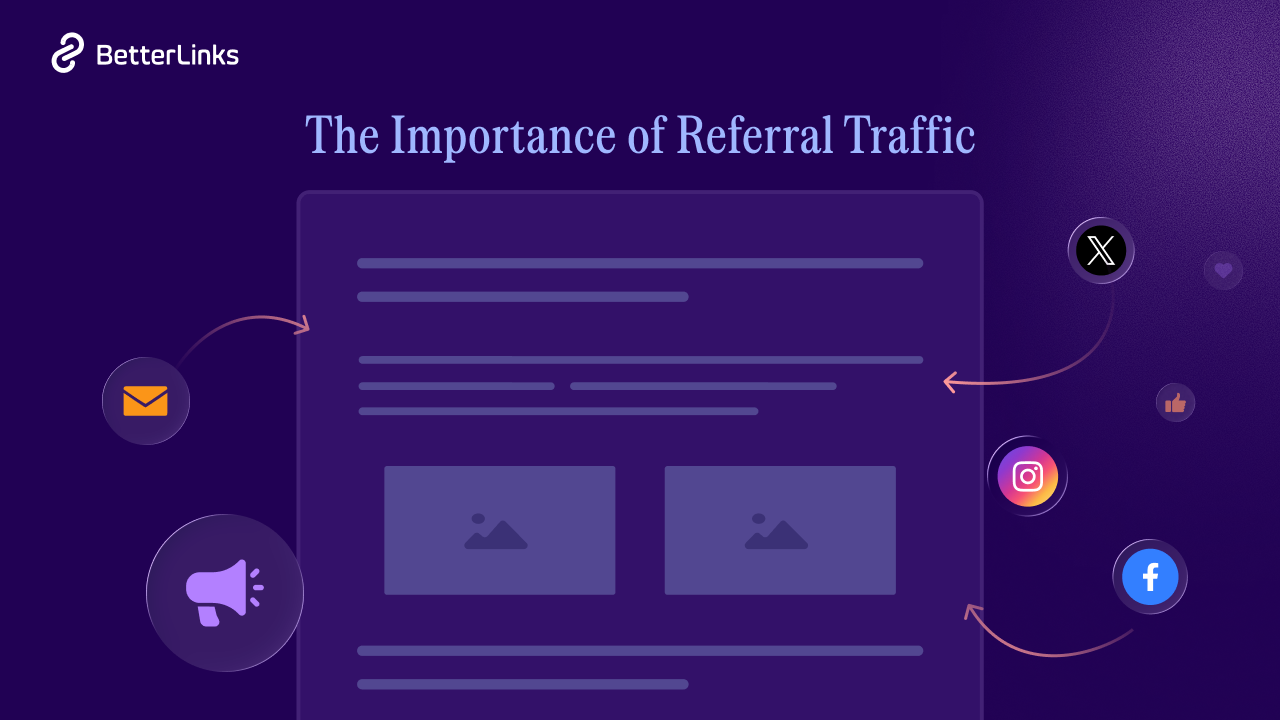Affiliate marketing drives trust and engagement, and effective strategies drive clicks on affiliate links. When your links are not clicked, your campaigns can fall short, impacting your revenue and growth. This blog explores reasons why your affiliate links are not getting clicked and offers actionable solutions to help you optimize your affiliate marketing efforts. Let us dive in and uncover the fixes to boost your affiliate success.

10 Reasons Why Your Affiliate Links Aren’t Getting Clicked
Understanding why your links aren’t performing well is the first step to improving your affiliate marketing strategy. Let us explore the key reasons and solutions.
1. Lack of Trust in Your Website
Users may hesitate to click on affiliate links if they feel your website lacks credibility or authority. When visitors are unsure about the trustworthiness of your site, they are less likely to engage, which can hurt your traffic and conversions.
To address this, you should focus on building trust. Start by ensuring your website has a professional and polished design, as first impressions matter. Use SSL certificates to secure your site and show visitors that their data is safe.
Transparency is also key, it clearly displays policies like privacy, terms of service, and refund policies to reassure users. Showcase testimonials, reviews, or certifications prominently on your site. These elements can provide social proof and make users feel more confident about interacting with your website.
2. Poor Traffic to Your Content
Let us talk about the issue of poor traffic to your content. This is a common challenge that many content creators and affiliate marketers face. If your content is not getting enough organic traffic, it means fewer people are seeing it, and as a result, your affiliate links are not getting the exposure they need. This can be frustrating, especially if you have put a lot of effort into creating valuable content.
The main issue here is visibility. Without sufficient targeted traffic, even the best content can go unnoticed. Think of it like hosting a party where no one shows up—it does not matter how amazing the decorations or food are if there is no audience to appreciate them. The same principle applies to your content. You need people to visit your website, read your blog posts, or engage with your videos in order for your affiliate links and calls-to-action to have any impact.
Thankfully, there are practical solutions to address this problem. Let us break them down:
Focus on SEO Strategies

Search Engine Optimization (SEO) is one of the most effective ways to increase traffic to your content. Start by researching keywords that your target audience is searching for and incorporate them naturally into your content. Also, work on building quality backlinks from reputable websites, as this can boost your search engine rankings. Do not forget about optimizing meta descriptions and alt tags for images, and ensuring that your site has a fast loading speed.
Use Social Media

Social media platforms are powerful tools for driving traffic. Share your content on platforms where your audience spends their time, whether it is Instagram, Twitter, LinkedIn, or Facebook. Use engaging captions and visuals to grab attention and encourage clicks. You can also join relevant groups or communities where you can share your expertise and link back to your content.
Email Marketing
Email marketing remains one of the most reliable ways to bring visitors to your content. Build an email list by offering something valuable like a free guide or exclusive tips in exchange for email sign-ups. Once you have a list, send regular newsletters with links to your latest content. Make sure these emails are personalized and provide value so readers feel compelled to click through.
3. Irrelevant Affiliate Links
When you include affiliate links that have no connection to your niche or the content you are sharing, it can create a disconnect with your audience. Imagine visiting a blog about healthy living and suddenly seeing links for car accessories or gaming headsets. It feels out of place, does it not? This not only confuses your readers but can also erode their trust in your recommendations. People come to your platform expecting value and relevance, and when they encounter unrelated links, it can make them question your authenticity.

Moreover, irrelevant links often fail to generate clicks or conversions. Readers are unlikely to engage with products or services that do not align with their interests or the context of your content. This means all the effort you put into creating content and embedding those links ends up being wasted.
Here is the fix. Ensure affiliate products align with your audience’s interests and needs.
The first step to solving this issue is understanding your audience deeply. What are their interests? What problems are they trying to solve? Once you have clarity on these aspects, you can select affiliate products that genuinely add value to their lives. For example, if you run a blog about personal finance, promoting budgeting tools, investment platforms, or financial books makes perfect sense. These products align naturally with the needs of your audience.
Another fix might work in this case. Create content tailored around the products you are promoting. Instead of randomly inserting affiliate links into existing content, create specific pieces that revolve around the products or services you want to promote. For instance, if you are an affiliate for a fitness tracker, write a detailed review of the product or create a guide on how fitness trackers can help improve health goals. This approach makes the promotion feel organic and useful rather than forced.
4. Overly Long Or Complicated Links
Let us be honest—no one feels confident clicking on a link that looks like a jumbled mess of random characters and numbers. Overly long or complicated links can seem untrustworthy, especially if they are filled with tracking codes, session IDs, or unnecessary parameters. They give off an unprofessional vibe and might even make users think the link could lead to something malicious. This is especially true in emails, social media posts, or anywhere people are cautious about phishing scams. The result? Fewer clicks and less engagement with your content.

How to fix this issue then to get click on your affiliate links? there are simple ways to solve this issue and make your links look clean and professional:
- Use Link Shorteners: Tools like BetterLinks are excellent for creating short, branded optimized URLs. These tools allow you to condense long links into something much more manageable and visually appealing. For instance, instead of sharing a link like https://www.example.com/category/page?utm_source=email&utm_campaign=spring_sale, you can shorten it to something like or even a custom branded link like yourbrand.link/sale. This not only looks better but also builds trust with your audience.
- Add Descriptive Anchor Text: If you are embedding links within text, avoid pasting the raw URL altogether. Instead, use descriptive anchor text that tells users exactly where the link will take them. For example, instead of saying “Click here,” you can write something more specific like “Learn more about our spring sale.” This approach not only improves clarity but also boosts accessibility and search engine optimization (SEO).
5. Poor Link Placement
In this case, if you do not practice smart link placement it can be a problem for your website or content. Imagine you have a fantastic link that leads to an important resource, product, or service, but it is hidden in a spot where nobody notices it. This is what happens when links are buried in irrelevant sections or placed in areas that are not easily visible. When users cannot find your links, they will simply ignore them, and that defeats the entire purpose of having those links in the first place.

Why Is This a Problem?
When links are not placed thoughtfully, they fail to grab the attention of your audience. For example, if a link is tucked away at the bottom of a page or hidden in a block of unrelated text, users might miss it entirely. This can lead to lower click-through rates, reduced engagement, and missed opportunities to guide users toward conversions. Poor link placement can also make your website feel disorganized and less user-friendly.
The good news is that fixing poor link placement is not complicated. Here are some actionable tips:
- Place Links Strategically: Always think about where your audience’s eyes are likely to go first. Placing links above the fold (the part of the page visible without scrolling) ensures they are seen right away. You can also include links within headings or subheadings to make them stand out.
- Add Contextual Relevance: Links should feel like a natural part of the content. If you are talking about a specific topic, include the link in that section instead of placing it somewhere random. This way, users will find it exactly when they need it.
- Use Bold Call-to-Action (CTA) Buttons: Sometimes plain text links are easy to overlook. A bold and visually appealing CTA button can draw attention and encourage clicks. For example, instead of saying “Click here,” use something more engaging like “Learn More” or “Get Started.”
6. Weak Or Missing Call-to-Actions (CTAs)
When it comes to creating content, one of the biggest pitfalls is having weak or missing call-to-actions (CTAs). A CTA is essentially the bridge between your content and the action you want your audience to take. Without a clear and compelling CTA, your readers might feel lost or unsure about what to do next. Let us dive into why this is a problem and how you can fix it.
Imagine reading an article, watching a video, or scrolling through a website that grabs your attention but leaves you hanging at the end. You might think, “This was interesting, but now what?” That is exactly what happens when there is no CTA or when the CTA is too vague. Readers need direction. They need to know what step they should take next—whether it is making a purchase, signing up for a newsletter, or simply learning more about your product or service.
A weak CTA, like “Click here” or “Submit,” does not inspire action because it lacks specificity or urgency. Worse yet, if there is no CTA at all, you are missing out on opportunities to engage your audience further or convert them into customers. It is like hosting a party and forgetting to tell people where it is happening!
To your surprise, fixing weak or missing CTAs is relatively simple. Start by crafting strong, actionable phrases that leave no room for confusion. For example:
- Instead of saying “Click here,” try “Learn More About Our Services.”
- Replace “Submit” with “Get Your Free Quote Now.”
- Use phrases like “Buy Now” or “Get This Deal” to create a sense of urgency and excitement.
The key is to make your CTAs clear, direct, and action-oriented. Your audience should immediately understand what they will gain by clicking or following through on your suggestion.
7. Promoting Low-Quality Products
When it comes to affiliate marketing, promoting low-quality products can be a significant misstep. Poor-quality items not only fail to meet your audience’s expectations but can also harm your credibility in the long run. If your followers feel misled or disappointed by the products you recommend, they may lose trust in you and stop engaging with your content altogether. This can lead to fewer clicks and, ultimately, reduced revenue.
To address this issue, you should take the time to carefully vet every product before promoting it. Research the product thoroughly, read reviews, and, if possible, test it yourself. Focus on recommending high-quality offerings that genuinely solve your audience’s problems or add value to their lives. By doing so, you will build trust with your audience and encourage repeat clicks and purchases.
8. Failing to Highlight Deals And Discounts
Another common mistake is failing to emphasize deals and discounts in your affiliate marketing strategy. People are naturally drawn to savings, and without a clear incentive, they may feel less motivated to make a purchase. If you overlook this aspect, you might miss out on potential conversions.
The solution is simple: make deals like black friday deals and discounts a prominent feature of your content. Highlight exclusive offers or limited-time promotions that give your audience a reason to act quickly. Use phrases like “limited-time offer” or “exclusive discount” to create urgency and encourage immediate action. By showcasing these incentives effectively, you can boost engagement and drive more sales.
9. Ignoring Mobile Optimization
In today’s mobile-first world, ignoring mobile optimization is a critical error in affiliate marketing. Many users browse websites on their phones or tablets, and if your site is not mobile-friendly, they may struggle to access links or navigate your content. This poor user experience can lead to lost clicks and potential revenue.
To fix this issue, ensure that your website is optimized for mobile devices. Use responsive design practices so that your site adapts seamlessly to different screen sizes. Additionally, test the visibility and functionality of all affiliate links across various devices to ensure they are easy to find and click. A smooth mobile experience will keep users engaged and increase the likelihood of conversions.
10. Outdated Content And Broken Links
Outdated content and broken links are another major problem in affiliate marketing. Over time, posts that once performed well may become irrelevant due to changes in products or expired affiliate links. This not only frustrates users but also reduces your chances of earning commissions from those posts.

To resolve this issue, conduct regular audits of your content. Check for broken links and replace them with updated ones. Refresh old posts by adding new information or replacing outdated products with current ones that align with your audience’s needs. Staying proactive in maintaining your content ensures it remains valuable and effective over time, keeping users engaged and driving consistent clicks.
Additional Strategies to Increase Your Affiliate Link Clicks
To further enhance your affiliate marketing success, it’s crucial to focus on strategies that go beyond just promoting links. One effective way is to ensure that your product links align with your audience’s needs. People are more likely to click on affiliate links when they find the products genuinely helpful or relevant to what they’re looking for. For example, sharing a product review or using a personal touch in your content can make your affiliate links feel more authentic and trustworthy.
To increase your conversion rate, make sure your call-to-action is compelling and clear. Whether it’s within blog posts or newsletters, encourage your audience to click on the links by offering value in every piece of content. Adding Amazon affiliate links to your content strategically, such as in-text links or visual product placement, can significantly improve engagement.
Building trust with your readers is vital for long-term success in affiliate marketing. When you endorse products you believe in, your audience will feel more confident in clicking your links and possibly purchasing. It’s essential to provide informative content that resonates with your readers, such as guides or insights on the latest trends in your niche. Sharing the benefits of products or services you have personally used can encourage clicks from those seeking real-life experiences.
SEO plays a crucial role in driving organic traffic to your website. By optimizing your content with relevant keywords, you will increase the likelihood of your affiliate links being seen by people actively searching for products to buy. Also, engaging in keyword search can help you target the right products and position them in a way that appeals to targeted traffic.
Remember to monitor your click-through rates and analytics to see which links perform best. Google AdSense can also help in driving more traffic to your site, ultimately increasing the chances of getting sales. Lastly, always ensure that your affiliate links lead to high-quality products and that your audience finds value in your recommendations, improving the chances of making a decent commission.
Enjoyed this post? Join our Facebook community to stay connected or subscribe to our blog to receive more updates on BetterLinks.






